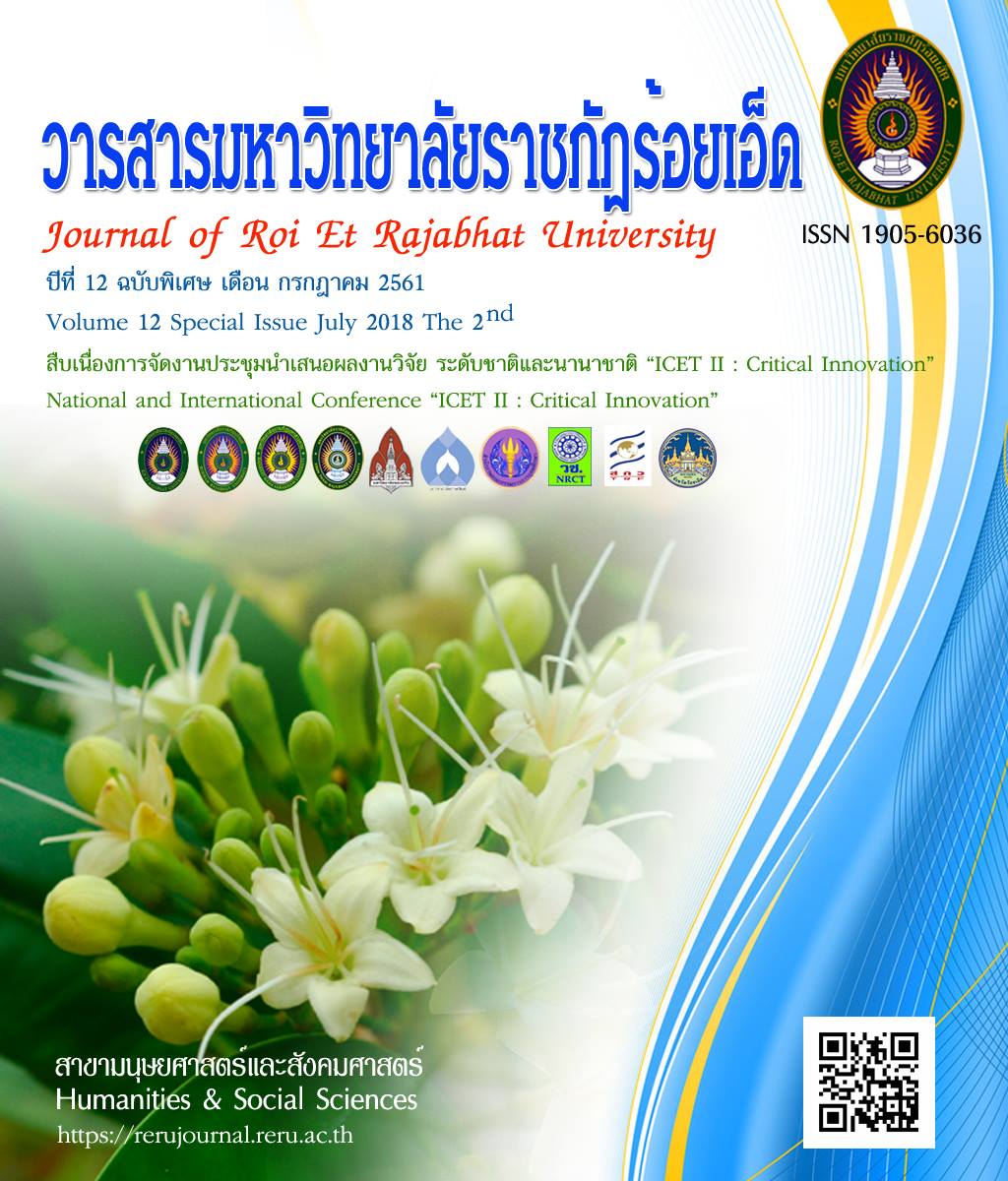Developing creativity and scientific attitudes about unit of organisms. The use of creative learning as a base. For students of Mathayomsuksa 1
Keywords:
Scientific attitude, Unit of life, Creativity-based learning managementAbstract
Developing creativity and scientific attitudes about unit of organisms. The use of creative learning
as a base. For students of Mathayomsuksa 1. This research aims to compare learning achievement. Before
and after school to develop creative skills. And measure the attitude toward the science. Using a creative
learning management model as the basis of the unit of life. The sample is Mathayomsuksa 1 students the
research instrument was a learning plan for creative thinking as a base. Test before and after school Creative Skills
Assessment and the attitude toward science. The unit of life Data collection 1) Clarification of learning
objectives. 2) Pre-test with multiple-choice quizzes, 4 options, and 40 essays, units of life, scoring and
recordings. 3) Teaching and learning in accordance with the research plan. The concept of creative
learning as a base. 12 weeks teaching time 4) during the experiment, record students' behaviors with
creative thinking assessment. 5) Post-trial experiment with posttest unit test. Have students make a measure of
their attitudes toward science. After learning by the creative management model as a base. Make a score
and record the results in a recording. 6) Take the scores from the test before and after the test. Creative
Skills Assessment and the attitudes toward the science that has been analyzed. Basic statistical methods
such as mean, standard deviation, and percentage are used to test the hypothesis. The results of the
study showed that post-study achievement was higher than that before. The mean values after learning
and before learning were 29.92 and 17.32. The average was 3.20 Stay in good and the attitude toward science.
After learning the creative model. The mean score was 4.58, which was in agreement.
References
ศึกษาศาสตรมหาบัณฑิต. มหาสารคาม. มหาวิทยาลัยมหาสารคาม.
มัยสุรี หยีมะเหร็ม. (2555). ผลการใช้ชุดกิจกรรมฝึกความคิดสร้างสรรค์ทางวิทยาศาสตร์ของนักเรียนชั้นประถมศึกษาปีที่ 3
ที่มีต่อผลสัมฤทธิ์ทางการเรียนสูง โรงเรียนบ้านทวดทอง จังหวัดนครศรีธรรมราช. วิทยานิพนธ์ คุรุศาสตรมหาบัณฑิต
สาขาวิชาการพัฒนาหลักสูตรและการเรียนการสอน. นครศรีธรรมราช. มหาวิทยาลัยราชภัฏนครศรีธรรมราช.
วิจารณ์ พานิช. (2556). วิถีสร้างการเรียนรู้เพื่อศิษย์ ในศตวรรษที่ 21. กรุงเทพฯ : มูลนิธิสดศรี-สฤษดิ์วงค์.
วิริยะ ฤาชัยพาณิชย์. (2558). การสอนแบบสร้างสรรค์เป็นฐาน Creativity-based Learning (CBL). วารสารนวัตกรรมการเรียนรู้,
1(2), 13. แบบสร้างสรรค์เป็นฐาน Creativity-based Learning (CBL). วารสารนวัตกรรมการเรียนรู้, 1(2), 13.
รายงานผลการทดสอบทางการศึกษาระดับชาติขั้นพื้นฐาน (O-NET) ชั้นมัธยมศึกษาปีที่ 3, จาก http//www.niets.or.th.
สุวัฒน์ นิยมไทย. (2553). การพัฒนารูปแบบการเรียนการสอนวิชาชีพแบบผสมผสาน โดยใช้โครงงานเป็นฐานใน
สถานประกอบการเพื่อพัฒนาการปฏิบัติงานและการแก้ปัญหา สำหรับนักเรียนระดับประกาศนียบัตรวิชาชีพ
ช่างอุตสาหกรรม. วิทยานิพนธ์ ครุศาสตรดุษฎีบัณฑิต สาขาวิชาเทคโนโลยีและสื่อสารการศึกษา. กรุงเทพมหานคร.
จุฬาลงกรณ์มหาวิทยาลัย.
อนรรฆ สมพงษ์. (2559). การศึกษาการจัดการเรียนการสอนโดยวิธีการสอนแบบสร้างสรรค์เป็นฐาน (Creativity Based
Learning: CBL) ในรายวิชา การศึกษาเอกสารและหลักฐานทางประวัติศาสตร์ สาขาวิชาสังคมศึกษา คณะครุศาสตร์
มหาวิทยาลัยราชภัฏสกลนคร. วิทยานิพนธ์ ศึกษาศาสตรมหาบัณฑิต. สาขาวิชาการบริหารการศึกษาบัณฑิตวิทยาลัย.
สกลนคร. มหาวิทยาลัยราชภัฏสกลนคร.
Downloads
Published
How to Cite
Issue
Section
License
บทความที่ได้รับการตีพิมพ์เป็นลิขสิทธิ์ของวารสารมหาวิทยาลัยราชภัฎร้อยเอ็ด
ข้อความที่ปรากฏในบทความแต่ละเรื่องในวารสารวิชาการเล่มนี้เป็นความคิดเห็นส่วนตัวของผู้เขียนแต่ละท่านไม่เกี่ยวข้องกับมหาวิทยาลัยราชภัฎร้อยเอ็ด และคณาจารย์ท่านอื่นๆในมหาวิทยาลัยฯ แต่อย่างใด ความรับผิดชอบองค์ประกอบทั้งหมดของบทความแต่ละเรื่องเป็นของผู้เขียนแต่ละท่าน หากมีความผิดพลาดใดๆ ผู้เขียนแต่ละท่านจะรับผิดชอบบทความของตนเองแต่ผู้เดียว





